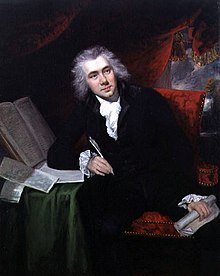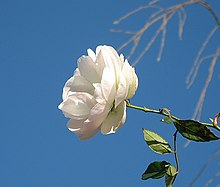Cuisine
The traditional cuisine of Yorkshire, in common with the North of England in general, is known for using rich tasting ingredients, especially with regard to sweet dishes, which were affordable for the majority of people.[134] There are several dishes which originated in Yorkshire or are heavily associated with it.[134] Yorkshire pudding, a savoury batter dish, is by far the best known of Yorkshire foods. It is commonly served with roast beef and vegetables to form part of the Sunday roast.[134]
Other foods associated with the county include: Yorkshire curd tart, a curd tart recipe withrosewater;[135][136] Parkin, a sweet ginger cake which is different from standard ginger cakes in that it includes oatmeal and treacle;[137] and Wensleydale cheese, a cheese associated withWensleydale and often eaten as an accompaniment to sweet foods.[138] The beverage ginger beer, flavoured with ginger, came from Yorkshire and has existed since the mid 18th century.[citation needed] Liquorice sweet was first created by George Dunhill from Pontefract, who in the 1760s thought to mix the liquorice plant with sugar.[139] Yorkshire and in particular the city of York played a prominent role in the confectionery industry, with chocolate factories owned by companies such as Rowntree's, Terry's andThorntons inventing many of Britain's most popular sweets.[140][141] Another traditional Yorkshire food is pikelets which are similar tocrumpets but much thinner.[142] The Rhubarb Triangle is a location within Yorkshire which supplies most of the rhubarb to locals.
In recent years curries have become popular in the county largely due to the immigration and successful integration of Asian families. There are many famous curry empires with their origins in Yorkshire including the 850-seater Aakash restaurant in Cleckheaton which has been described as "the world's largest curry house".[143]

Beer and brewing
Yorkshire has a number of breweries including Black Sheep, Copper Dragon, Cropton Brewery, John Smith's, Sam Smith's, Tetley's, Kelham Island Brewery, Theakstons and Timothy Taylor.[144] The beer style most associated with the county is bitter.[145] As elsewhere in the North of England, when served through a handpump, a sparkler is used giving a tighter, more solid head.[146]
Brewing has taken place on a large scale since at least the 12th century, for example at the now derelict Fountains Abbey which at its height produced 60 barrels of strong ale every ten days.[147] Most current Yorkshire breweries date from the Industrial Revolution of the late eighteenth and early 19th century.[144]
Music and film

Yorkshire has a rich heritage of folk music and folk dance including particularly Long Sword dance.[148] Yorkshire folk song was chiefly distinguished by the use of dialect, particularly in the West Riding and exemplified by the song 'On Ilkla Moor Baht 'at', probably written in the later 19th century and using a Kent folk tune (almost certainly borrowed via a Methodist hymnal), but often seen as an unofficial Yorkshire anthem.[149] The most famous folk performers from the county are the Watersons from Hull, who began recording Yorkshire versions of folk songs from 1965.[150]Other Yorkshire folk musicians include Heather Wood (b. 1945) of the Young Tradition, the short-lived electric folk group Mr Fox (1970–2), The Deighton Family, Julie Matthews, Kathryn Roberts, and Kate Rusby.[150] Yorkshire has a flourishing folk music culture, with over forty folk clubs and thirty annual folk music festivals.[151] In 2007 the Yorkshire Garland Group was formed to make Yorkshire folk songs accessible online and in schools.[152]
Yorkshire is often called the home of the brass band and the county boasts some of the most famous and successful bands in the world such as Black Dyke, Brighouse & Rastrick, Yorkshire Imperial, Yorkshire Building Society, and Carlton Main Frickley.[citation needed] Historically the bands evolved around the mines, mills and steel works in the county but the demise of these industries has meant that the bands are now professional ensembles in their own right.[citation needed] Although brass is still considered by many in the UK to be a niche form of music, its popularity has increased overseas and UK bands often perform in Europe, Australia, the far east and the USA.[citation needed]
During the 1970s David Bowie, himself of a father from Tadcaster in North Yorkshire,[153] hired three musicians from Hull in the form of Mick Ronson, Trevor Bolder and Mick Woodmansey; together they recorded Ziggy Stardust and the Spiders from Mars, an album that went on to become widely considered as one of the greatest and most influential of all time.[154] In the following decade, Def Leppard, from Sheffieldachieved worldwide fame, particularly in America. Their 1983 album, Pyromania (album) and 1987 album, Hysteria (Def Leppard album)became one of the most successful albums of all time. Yorkshire had a very strong post-punk scene which went on to achieve wide spread acclaim and success, including; The Sisters of Mercy, The Cult, Vardis, Gang of Four, ABC, The Human League, New Model Army, Soft Cell, Chumbawamba, The Wedding Present and The Mission.[155] Pulp from Sheffield had a massive hit in the form of Common People during 1995, the song focuses on working-class northern life.[156] The 21st century saw popularity of indie rock and post-punk revival bands from the area with the Kaiser Chiefs, The Cribs and the Arctic Monkeys, the latter of whom hold the record for the fastest-selling debut album in British music history with Whatever People Say I Am, That's What I'm Not.[157]
The three most prominent British television shows filmed in (and based on) Yorkshire are the sitcom Last of the Summer Wine, the drama series Heartbeat, and the soap opera Emmerdale, the latter two of which are produced by Yorkshire Television. Last of the Summer Wine in particular is noted for holding the record of longest-running comedy series in the world, from 1973 until today.[158] Other notable television series set in Yorkshire include The Beiderbecke Trilogy, Rising Damp, Fat Friends and The Royal. Several noted films are set in Yorkshire, including Kes, This Sporting Life, Room at the Top, Brassed Off, Mischief Night, Rita, Sue and Bob Too and Calendar Girls. A comedy film set in Sheffield named The Full Monty, won an Academy Award and was voted the second best British movie of all-time by ANI.[159] The county is also referenced in Monty Python's The Meaning of Life during a segment on birth where a title card read, "The Miracle of Birth, Part II—The Third World". The scene opens into a mill town street, subtitled "Yorkshire".[160] Monty Python also performed the Four Yorkshiremen sketch live, which first featured on At Last the 1948 Show.[161]
Governance
Politics
From 1290, Yorkshire was represented by two Members of Parliament of the House of Commonsof the Parliament of England. After the union with Scotland two members represented the county in the Parliament of Great Britain from 1707 to 1800 and of the Parliament of the United Kingdomfrom 1801 to 1832. In 1832 the county benefited from the disfranchisement of Grampound by taking an additional two members.[162] Yorkshire was represented at this time as one single, large, county constituency.[162] Like other counties, there were also some county boroughs within Yorkshire, the oldest was the City of York which had existed since the ancient De Montfort's Parliament of 1265. After the Reform Act 1832, Yorkshire's political representation in parliament was drawn from its subdivisions, with Members of Parliament representing each of the three historic Ridings of Yorkshire; East Riding, North Riding and West Riding constituencies.[162]
For the 1865 general elections and onwards, the West Riding was further divided into Northern,Eastern and Southern parliamentary constituencies, though these only lasted until the majorRedistribution of Seats Act 1885.[163] This act saw more localisation of government in the United Kingdom, with the introduction of 26 new parliamentary constituencies within Yorkshire, while theLocal Government Act 1888 introduced some reforms for the county boroughs, of which there were 8 in Yorkshire by the end of the 19th century.[164]
With the Representation of the People Act 1918 there was some reshuffling on a local level for the1918 general election, revised again during the 1950s.[165] The most controversial reorganisation of local government in Yorkshire was the Local Government Act 1972,[166] put into practice in 1974. Under the act, the Ridings lost their lieutenancies, shrievalties, administrative counties. County boroughs and their councils were abolished, to be replaced by metropolitan and non-metropolitan counties with vastly changed borders.[54] Although some government officials[167] and Prince Charles[168] have asserted such reform is not meant to alter the ancient boundaries or cultural loyalties, there are pressure groups such as the Yorkshire Ridings Society who want greater recognition for the historic boundaries.[169] In 1996 the East Riding of Yorkshire was reformed as a unitary authority area and a ceremonial county. The Yorkshire and the Humber region of government office covers most, but not all of the historiccounty.Yorkshire and the Humber is a constituency for European elections, returning six MEPs to the European Parliament.

Monarchy and peerage
When the territory of Yorkshire began to take shape as a result of the invasion of the Danish vikings, they instituted a monarchy based at the settlement of Jórvík , York.[170] The reign of the Viking kings came to an end with the last king Eric Bloodaxe dying in battle in 954 after the invasion and conquest by the Kingdom of England from the south. Jórvík was the last of the independent kingdoms to be taken to form part of the Kingdom of England and thus the local monarchal title became defunct.[171]
Though the monarchal title became defunct, it was succeeded by the creation of the Earl of Yorktitle of nobility[172] by king of England Edgar the Peaceful in 960.(The earldom covered the general area of Yorkshire and is sometimes referred to as the Earl of Yorkshire)[172] The title passed through the hands of various nobles, decided upon by the current king of England. The last man to hold the title was William le Gros, however the earldom was abolished by Henry II as a result of a troubled period known as The Anarchy.[173]
The peerage was recreated by Edward III in 1385, this time in the form of the prestigious title ofDuke of York which he gave to his son Edmund of Langley. Edmund founded the House of York; later the title would be merged with that of the King of England. Much of the modern day symbolism of Yorkshire , such as the White Rose of York, is derived from the Yorkists,[174] giving the house a special affinity within the culture of Yorkshire. Especially celebrated is the Yorkist king Richard III who spent much of his life at Middleham Castle in Yorkshire.[37][175] Since that time the title has passed through the hands of many, being merged with the crown and then recreated several times. The title of Duke of York remains prestigious and is given to the second son of the British monarch.[176]

No comments:
Post a Comment